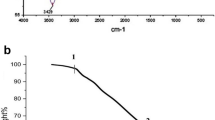Abstract
Fried starchy foods have the conditions to produce harmful compounds, such as acrylamide and malondialdehyde (MDA). One of these popular and commonly consumed foods among Iranians is Tah-Dig. This study aimed to evaluate the factors that affect their production and also levels in Tah-Dig. In this cross-sectional study, the information about the cooking pattern and consumption of Tah-Dig was randomly obtained from 611 households in Kermanshah through a dietary pattern questionnaire. Samples were provided by the households were classified according to type (potato, rice and bread) and color (golden, light brown and dark brown). Acrylamide levels were measured by a LC–mass spectrometer, and MDA levels were measured using a barbituric acid kit. More than 77.7% of participants consumed Tah-Dig at least 5 times a week. Potato Tah-Dig had the highest amount of acrylamide (1096 ± 637 ng/g). By changing the color value from golden to dark brown, the amount of acrylamide in all types of Tah-Dig increased significantly (P-value < 0.001). The highest amount of MDA was ascribed to canola oil (1527.89 ± 519.20 ng/L) and the lowest to ghee (546.12 ± 213.43 ng/L), after the Tah-Dig was cooked. No correlation was found between the type of oil and the amount of acrylamide. Tah-Dig is considered a harmful food among Iranian households due to its high consumption frequency and the abundance of acrylamide and MDA. Food and nutrition policymakers should consider teaching the proper cooking ways of such foods to the people.


Similar content being viewed by others

Data availability
Not applicable.
References
H. Lingnert, S. Grivas, M. Jägerstad, K. Skog, M. Törnqvist, P. Aman, Scand. J. Nutr. 46, 159–172 (2002)
C. Pelucchi, C. Bosetti, C. Galeone, C.L. Vecchia, Int. J. Cancer 136, 2912–2922 (2015)
M. Huang, J. Jiao, J. Wang, X. Chen, Y. Zhang, Environ. Pollut. 238, 852–858 (2018)
Y. Zhang, M. Huang, P. Zhuang, J. Jiao, X. Chen, J. Wang, Y. Wu, Environ. Int. 117, 154–163 (2018)
International Agency for Research on Cancer, Some industrial chemicals, in IARC Monographs on the Evaluation of the Carcinogenic Risk of Chemicals to Humans, vol 60 (IARC, 1994)
C.A.G. Timmermann, S.S. Mølck, M. Kadawathagedara, A.A. Bjerregaard, M. Törnqvist, A.L. Brantsæter, M. Pedersen, Toxics 9, 155 (2021)
B. Akbari-adergani, A. Ahmadi, G. Jahedkhanki, R.N. Nodehi, P. Sadighara, Curr. Nutr. Food Sci. 16, 776–780 (2020)
B. Akbari-Adergani, K. Mahmood-Babooi, A. Salehi, G. Jahed Khaniki, N. Shariatifar, P. Sadighara, T. Zeinali, Environ. Monit. Assess. 193, 540 (2021)
Z. Lepara, O. Lepara, A. Fajkić, D. Rebić, J. Alić, H. Spahović, Rom. J. Intern. Med. 58, 146–152 (2020)
R.T. Wani, J. Fam. Med. Prim. Care 8, 1846–1849 (2019)
M. Momayyezi, H. Fallahzadeh, J. Caring Sci. 9, 140–147 (2020)
M.K. Charles-Ayinde, L.D. Stuchal, A.E. Mathews, A.S. Kane, J. Environ. Public Health 2020, 2704074 (2020)
A. Tayyebi azar, M. Fallah-Karkan, M.A. Hosseini, B.K. Azad, A. Heidarzadeh, J. Hosseini, Urol. J. 17, 61–67 (2020)
M. Perc, J. R. Soc. Interface 17, 20190686 (2020)
P.E. Shahrbabki et al., Food Chem. Toxicol. 118, 361–370 (2018)
A. Habib, M.M. Alam, I. Hussain, N. Nasir, M. Almuthebi, BioMed Res. Int. 2020, 7257052 (2020)
C. Hartmann, M. Siegrist, K. van der Horst, Public. Health Nutr. 16, 1487–1496 (2013)
M.T. Boroushaki, E. Nikkhah, A. Kazemi, M. Oskooei, M. Raters, Food Chem. Toxicol. 48, 2581–2584 (2010)
EPoCitF Chain, EFSA J. 13, 4104 (2015)
P.J. Lea, L. Sodek, M.A.J. Parry, P.R. Shewry, N.G. Halford, Ann. Appl. Biol. 150, 1–26 (2007)
D.R. Lineback, J.R. Coughlin, R.H. Stadler, Annu. Rev. Food Sci. Technol. 3, 15–35 (2012)
M. Negoita, E. Iorga, A. Adascalului, L. Catana, N. Belc, A. Stan, D. Efstatiade, H.Y. Aboul-Enein, J. Environ. Sci. Eng. A 5, 180–189 (2016)
F. Pedreschi, P. Moyano, K. Kaack, K. Granby, Food Res. Int. 38, 1–9 (2005)
A. Serpen, V. Gökmen, J. Food Compos. Anal. 22, 589–595 (2009)
D.N. Perera, G.G. Hewavitharana, S.B. Navaratne, BioMed Res. Int. 2021, 6258508 (2021)
H. Zhang, H. Zhang, L. Cheng, L. Wang, H. Qian, Food Addit. Contam. A 32, 1083–1088 (2015)
R. Zamora, F.J. Hidalgo, J. Agric. Food Chem. 56, 6075–6080 (2008)
I. Bikulčienė et al., Med. Sci. Monit. Basic Res. 27, e929634 (2021)
A. Papastergiadis, et al., Food Chem. Toxicol. 73, 51–58 (2014)
M. Guasch-Ferré et al., J. Am. Coll. Cardiol. 75, 1729–1739 (2020)
E.M. Yubero-Serrano, J. Lopez-Moreno, F. Gomez-Delgado, J. Lopez-Miranda, Eur. J. Clin. Nutr. 72, 8–17 (2019)
L. Ma, Q. He, Y. Qiu, H. Liu, J. Wu, G. Liu, C. Brennan, M.A. Brennan, L. Zhu, Food Chem. 347, 129080 (2021)
M. Grootveld, B.C. Percival, J. Leenders, P.B. Wilson, Nutrients 12, 974 (2020)
Z. Li et al., Am. J. Clin. Nutr. 91, 1180–1184 (2010)
S. Moumtaz, B.C. Percival, D. Parmar, K.L. Grootveld, P. Jansson, M. Grootveld, Sci. Rep. 9, 1–21 (2019)
Acknowledgements
The authors would like to thank the Kermanshah University of Medical Sciences for the financial support of this research. We also sincerely appreciate all those who participated in this study.
Funding
This work was supported by the Vice-Chancellor for Research of Kermanshah University of Medical Sciences under Grant Number 980216.
Author information
Authors and Affiliations
Corresponding authors
Ethics declarations
Conflict of interest
The authors have declared no conflict of interest.
Additional information
Publisher’s Note
Springer Nature remains neutral with regard to jurisdictional claims in published maps and institutional affiliations.
Rights and permissions
About this article
Cite this article
Karimi, S., Goudarzi, F., Soleimani, D. et al. Evaluation of acrylamide and malondialdehyde levels in Tah-Dig of fried starchy foods: a case study in Iran. Food Measure 16, 2434–2439 (2022). https://doi.org/10.1007/s11694-022-01343-z
Received:
Accepted:
Published:
Issue Date:
DOI: https://doi.org/10.1007/s11694-022-01343-z



